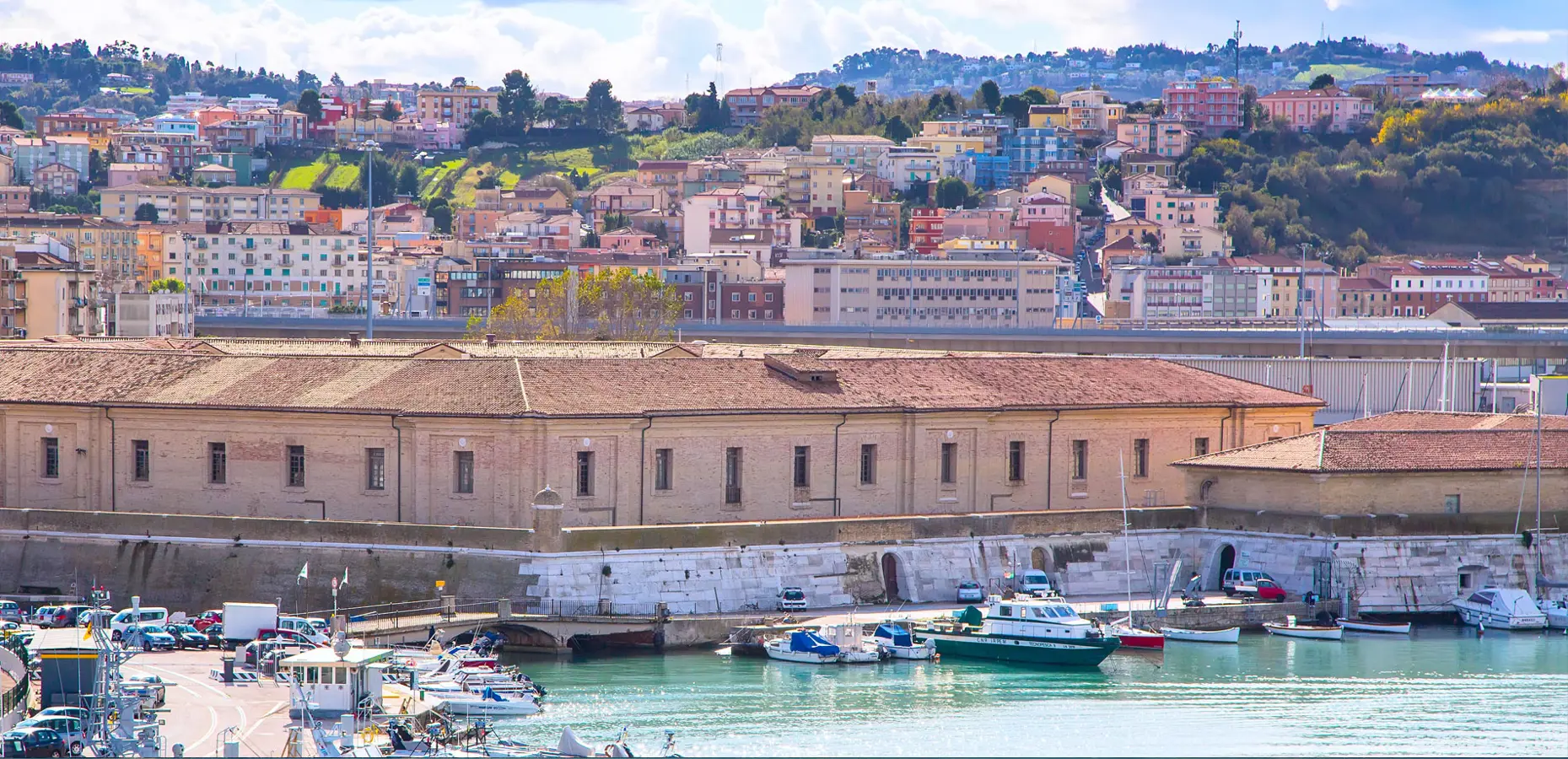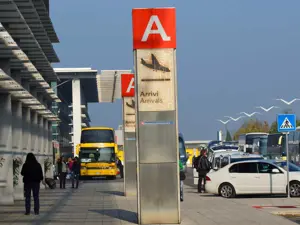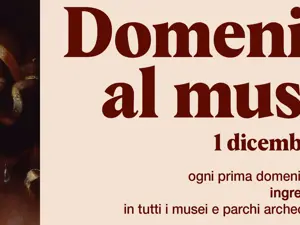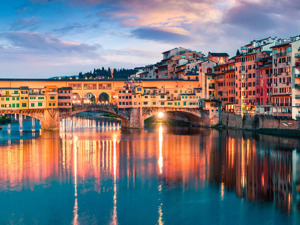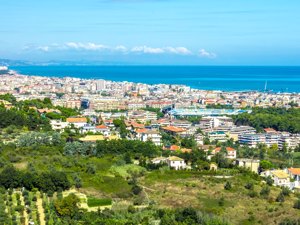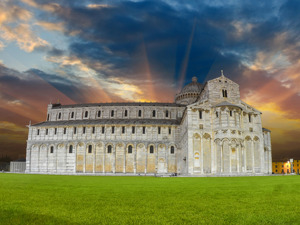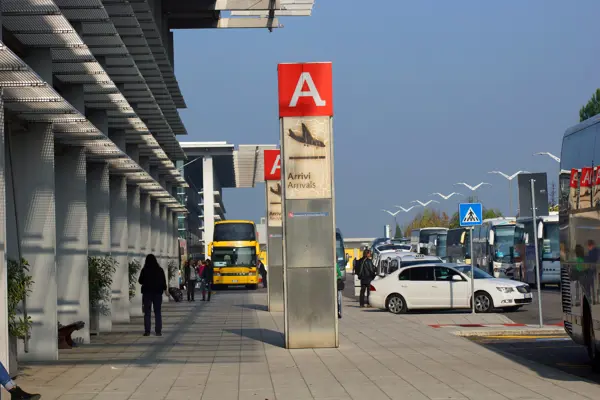An ancient Maritime Republic
Situated on a plateau above the Conero riviera with an unbeatable view of the Adriatic Sea, the city of Ancona, chief town of Le Marche, still displays signs of its ancient and prosperous past as a Maritime Republic, concerned primarily with trading with the East.
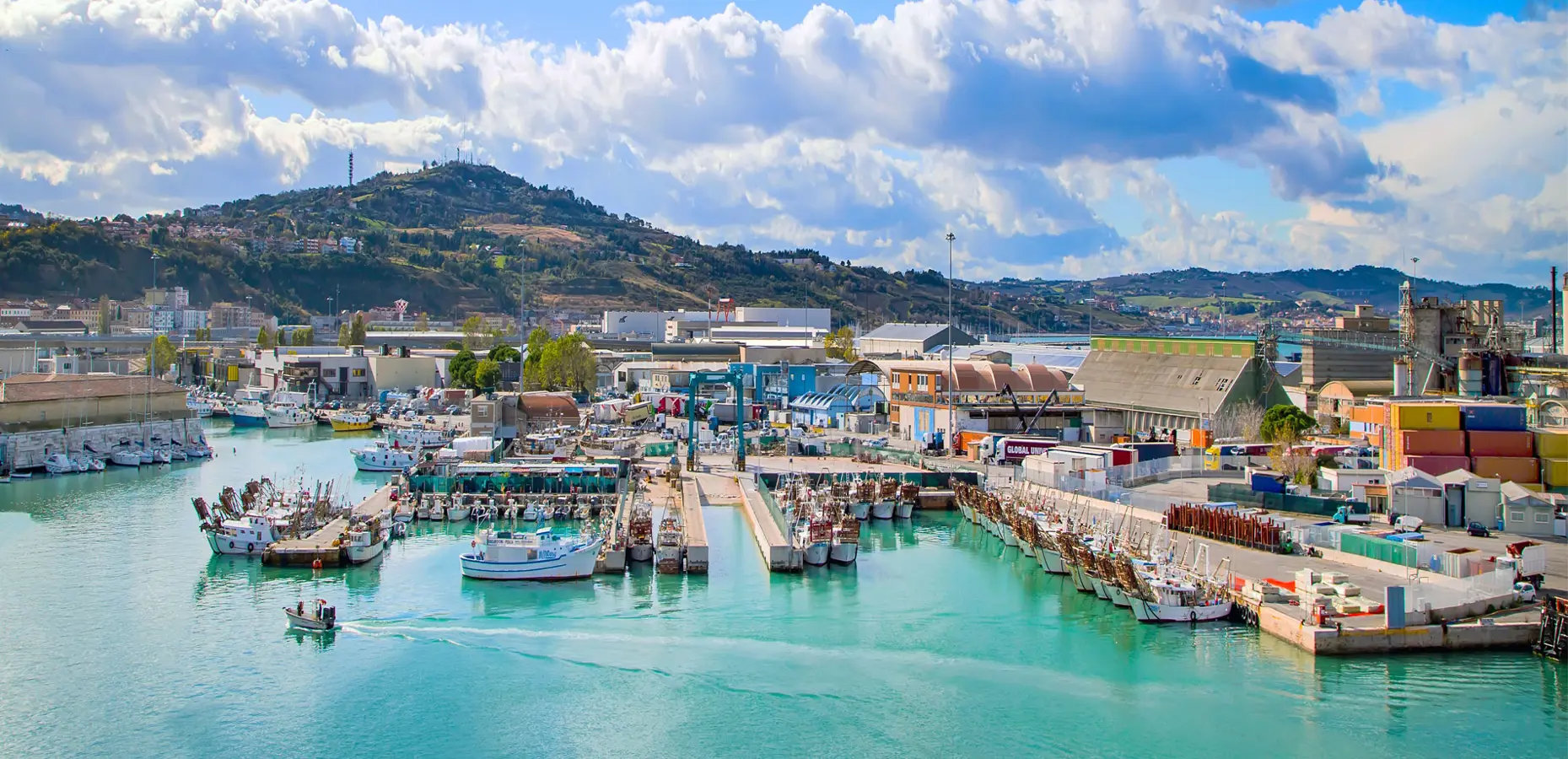
Monuments such as the Cathedral of San Ciriaco - the Cathedral, the Palazzo del Senato and the Church of Santa Maria della Piazza were built in a harmonious Romanesque style at the time of the city’s greatest economic splendour.
Saint Cyriacus Cathedral
Dedicated to Saint Cyriacus of Jerusalem, patron saint of the city, the Cathedral is the true symbol of Ancona which faces the sea and protects its people. Built on the remains of a Greek temple dedicated to Aphrodite Euploia, the goddess of navigation, it appears in its essential Romanesque form to which Byzantine elements are added; inside is the interesting Diocesan Museum.
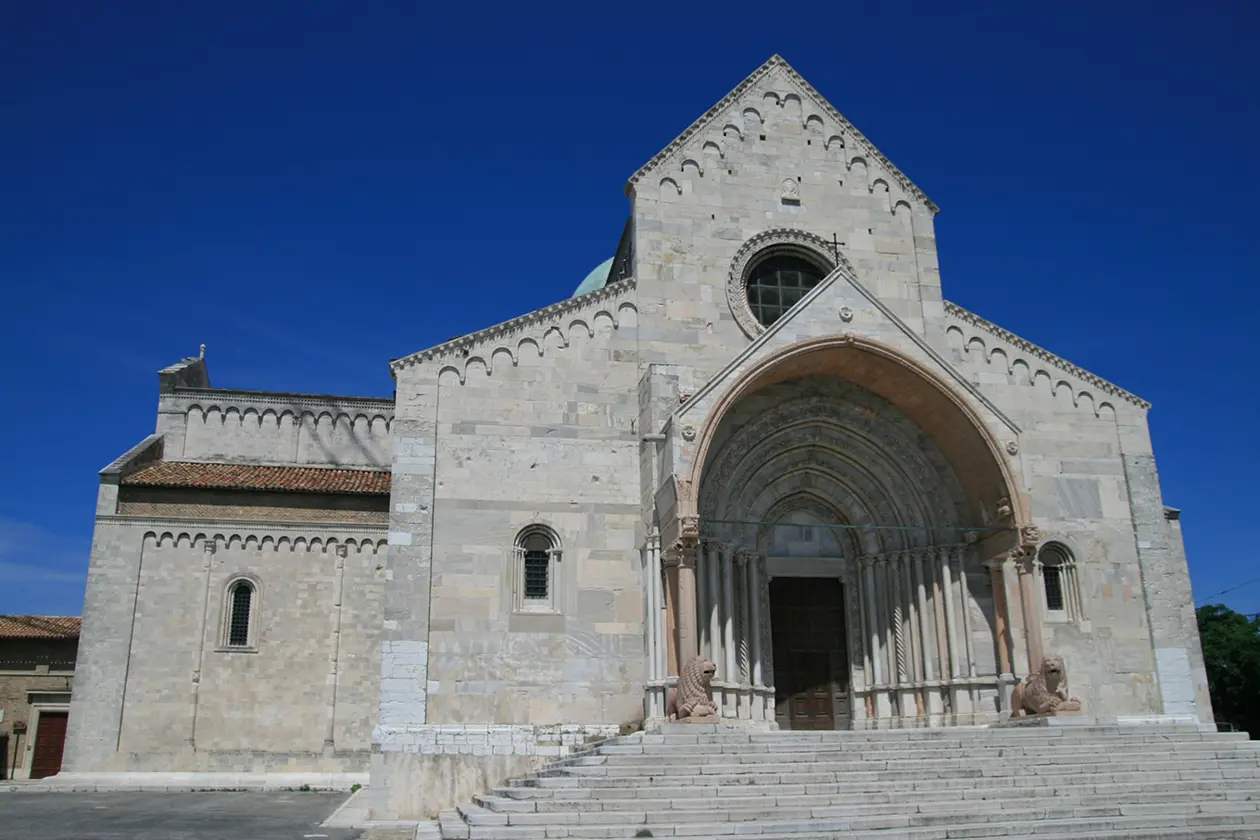
Mole Vanvitelliana in Ancona
One of Ancona’s most unique monuments is the Mole Vanvitelliana or Lazzaretto of Ancona, which sits in the water in the port (in the past considered one of the safest ports), and is joined to dry land by a bridge. With a characteristic pentagon shape, this immense building has had various functions, including leper hospital, fortress, hospital, barracks and tobacco warehouse; today it the site of cultural and musical initiatives.
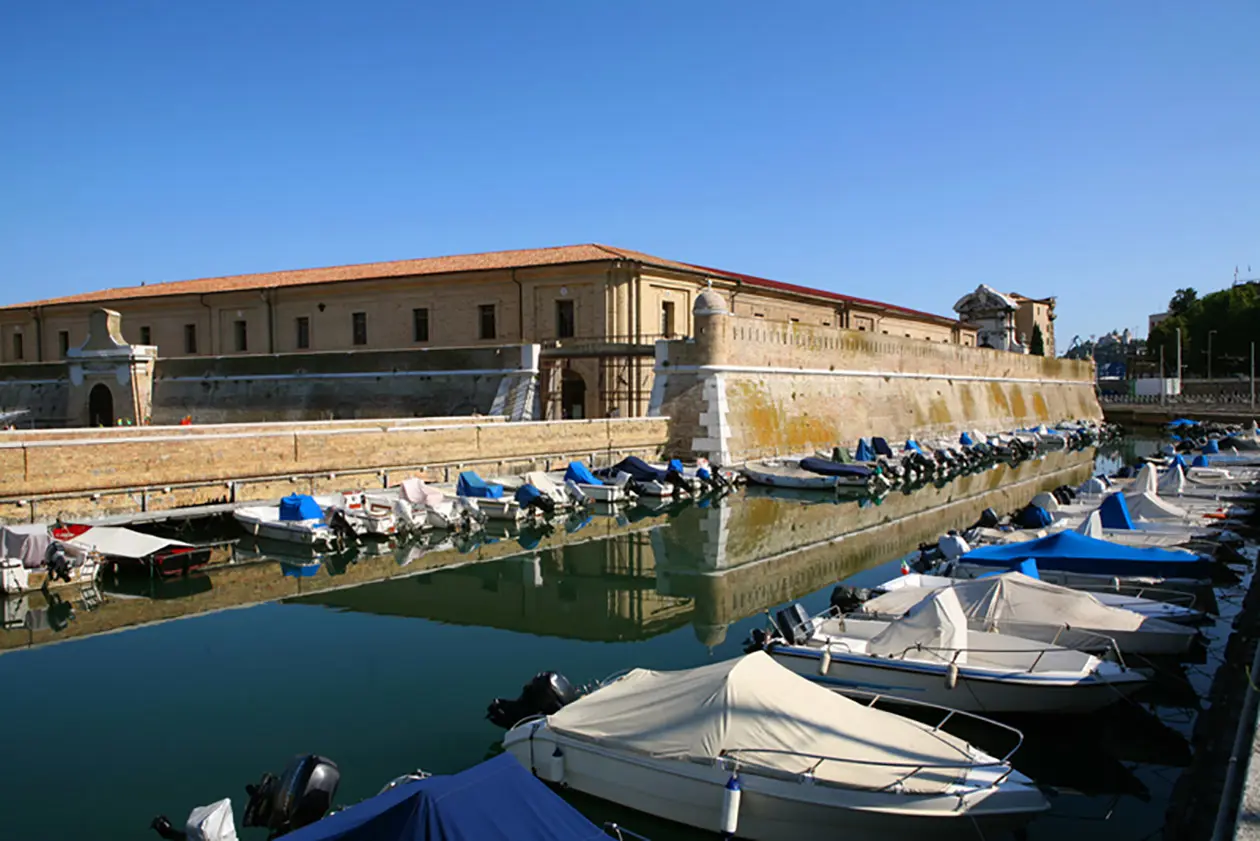
The sea air gives Ancona a mild climate in every season and the sea is visible from almost every corner of the city, such as the Passetto, a magical place surrounded by greenery with a panoramic view over the water and Riviera, which is set in the vast Parco Regionale del Conero.
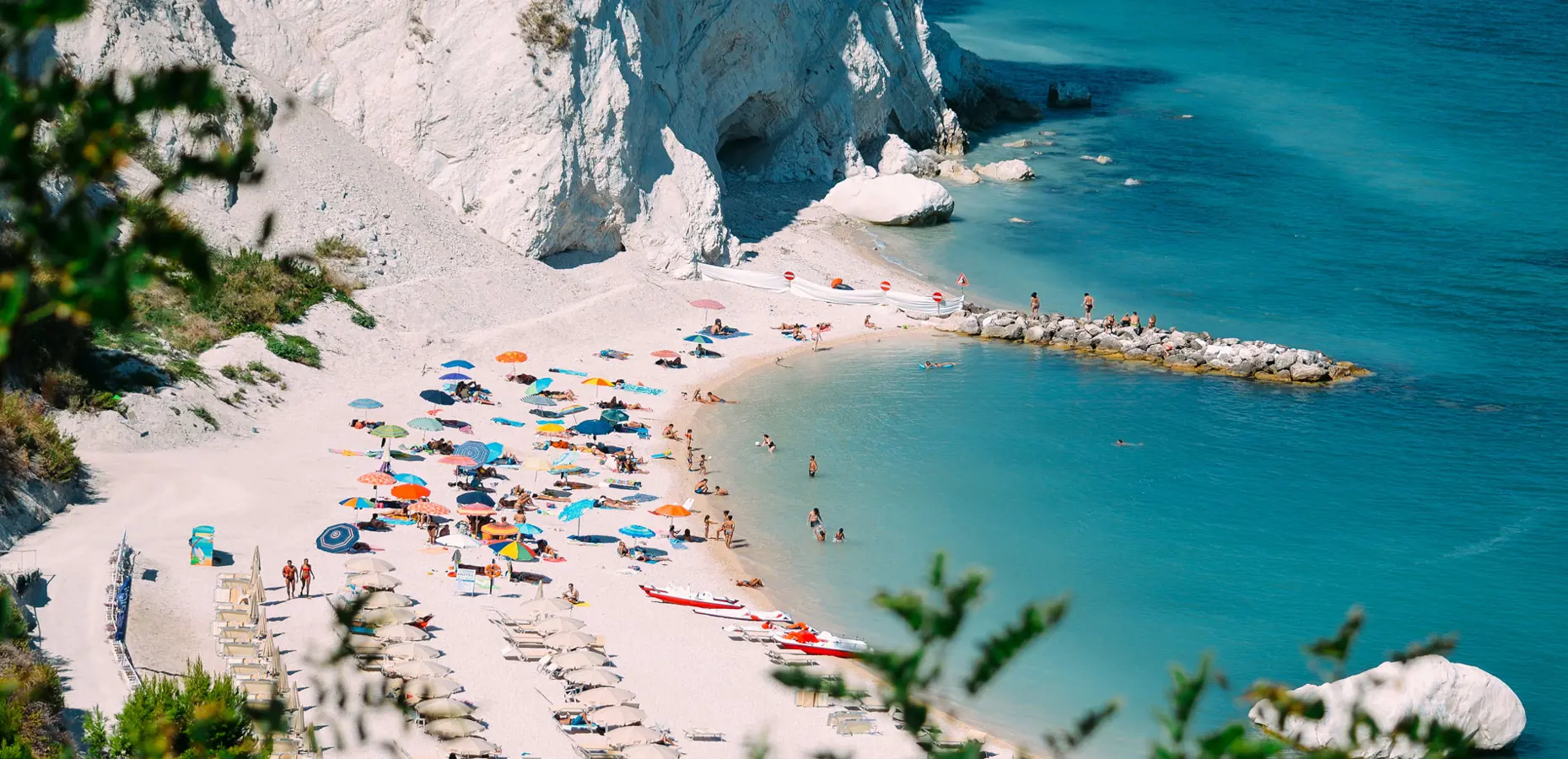
A monument in Piazza del Passetto remembers those who fell in the Great War: a small Doric temple of white marble. The Passetto leads to be beach below, which is perfectly equipped in the summer period. It can also be reached by a double monumental stairway, or even a lift.
Venturing further into the centre of the city of Ancona, in Piazza della Repubblica stands the elegant Neoclassical Teatro delle Muse with its wonderful high-reliefs in the tympanum depicting Apollo and the Muses. Today the theatre also bears the name of the great local tenor Franco Corelli.
The history of the city, from its birth to recent events, which made it one of the main economic centres of the region, is told is exhaustive detail in the Museo della Città di Ancona. Among the museums there is one that is truly unique: the Museo Tattile Statale Omero, which is housed in the Mole Vanvitelliana and established on the inspiration of the Unione Italiana dei Ciechi (Italian Institute for the Blind), where non-seeing people can discover art works and learn about the various eras of art history as in a three-dimensional encyclopaedia.
Arch of Trajan in Ancona
Ancona’s Roman past is testified by the candid elegance of the Arco di Traiano, on the pier, which is almost two thousand years old. It was built in 115 AD by Apollodoro of Damascus in Imetto marble in honour of the Roman Emperor who was the greatest advocate of the rebirth of the port of Ancona and even paid for its reconstruction.
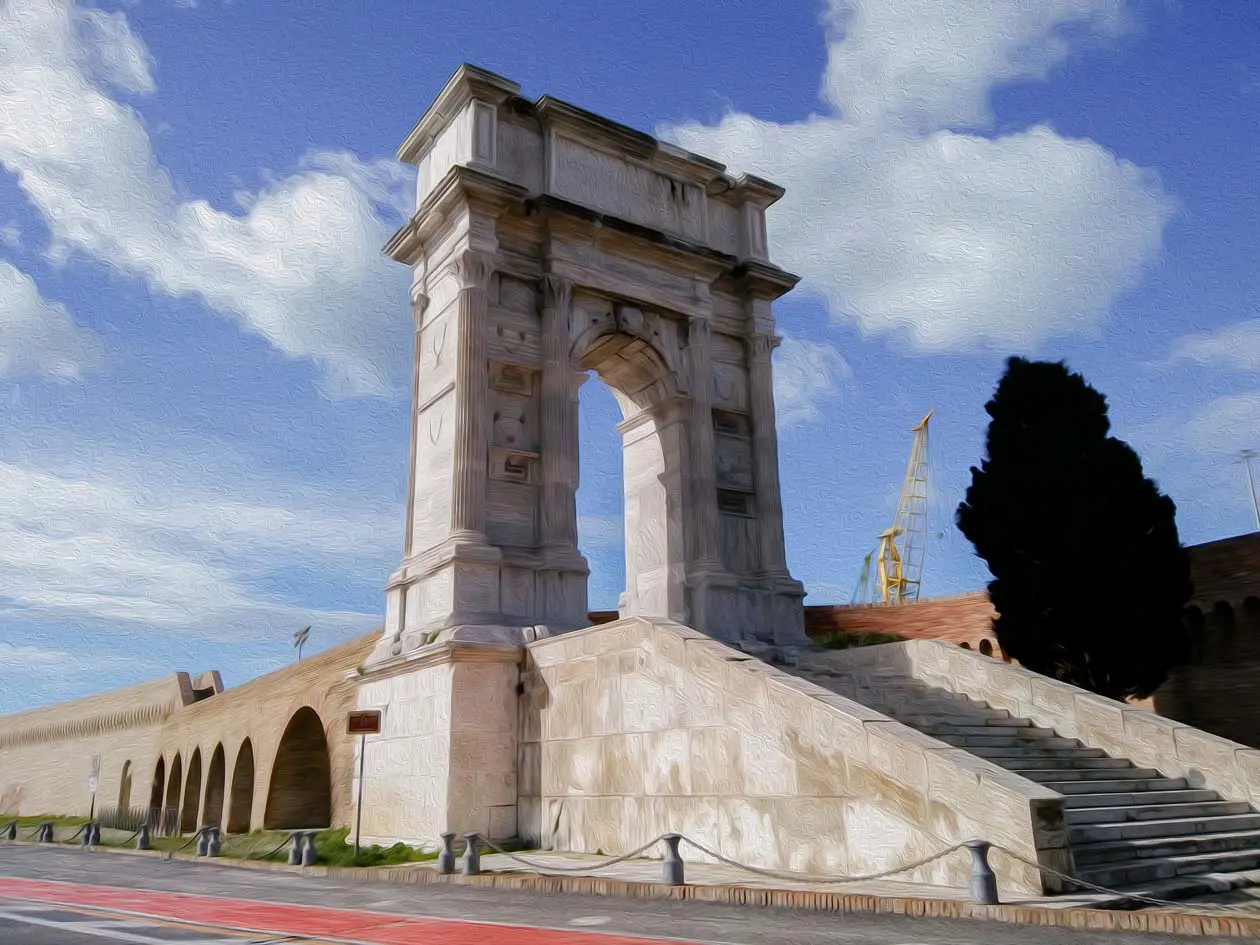
Porta Pia instead dates back to the eighteenth century. One of the monumental entrances to the city, built in a sumptuous Baroque style, it frames the two symbols of Ancona: the Cathedral and the very beautiful Faro vecchio (old lighthouse). The Museo Archeologico Nazionale delle Marche (Marche National Archaeology Museum) is housed in the sixteenth-century Palazzo Ferretti. One of the most famous museums of its kind, it is filled with finds from digs undertaken in Le Marche which provide evidence of the daily life of the local population.

The gastronomic specialities of Ancona
One of the many delightful aspects of Ancona is the food, which features recipes unknown elsewhere: fish is in first place, such as the Ancona-style stockfish or the ciavattoni allo scoglio (locally produced large macaroni served with shellfish), or the famous Ancona fish soup; but there are also recipes made with the produce from the surrounding countryside, such as the porchetta (spit-roasted pork), which was supposedly developed here, andvincisgrassi, a first course dish of lasagne served with a very rich meat sauce. Among the local wines, white Verdicchio and full-bodied red Conero stand out.
Text by Anna Glik
Copyright © Sisterscom.com
Tourism Board
www.comune.ancona.gov.it
www.turismo.marche.it
Partnership with Booking.com
Ancona is a welcoming city and offers different possibilities for accommodation.
To find the ideal hotel and the best offers you can do a search for the stars but also for districts or landmarks.
AIRPORT
Hotels near the airport
WHERE TO GO in ancona
Monuments in Ancona
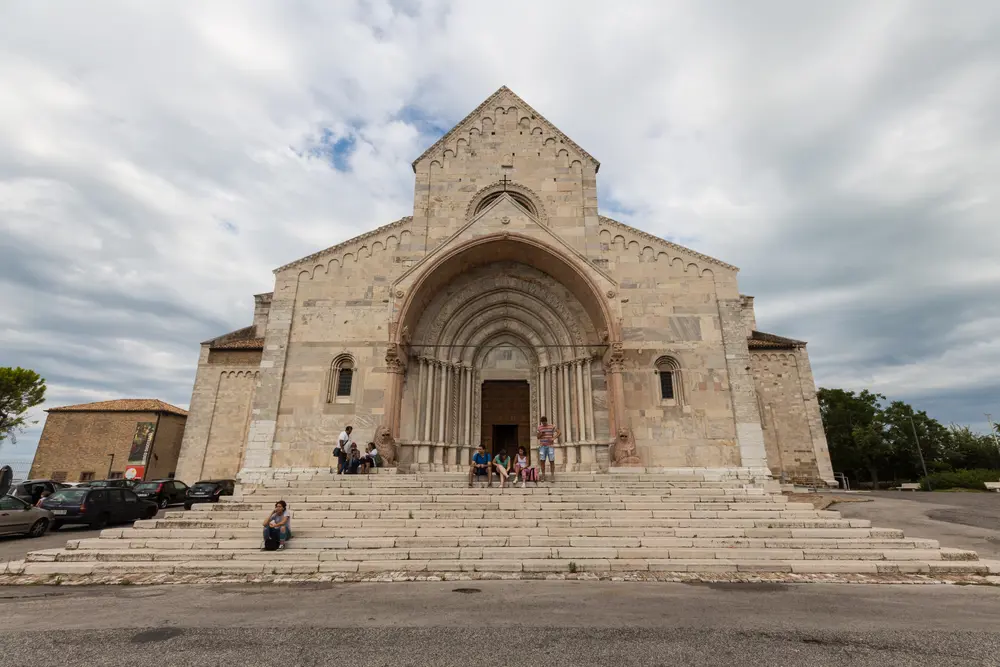
Photo: Copyright© Sisterscom.com, Shutterstock
CATHEDRAL OF SAN CIRIACO
Piazza del Duomo
Symbol of the city of Ancona, the Cathedral sits majestically on the top of Guasco Hill. It has a Romanesque plan with Gothic and Byzantine elements and was built between the eleventh and fourteenth centuries. San Ciriaco has one of the oldest domes in Italy. It has an ogival shape with a twelve-sided tambour resting on a square base decorated with small arches. A painting of the “Virgin of all saints” by an unknown artist can be found inside the cathedral, in the right-hand apse.
Symbol of the city of Ancona, the Cathedral sits majestically on the top of Guasco Hill. It has a Romanesque plan with Gothic and Byzantine elements and was built between the eleventh and fourteenth centuries. San Ciriaco has one of the oldest domes in Italy. It has an ogival shape with a twelve-sided tambour resting on a square base decorated with small arches. A painting of the “Virgin of all saints” by an unknown artist can be found inside the cathedral, in the right-hand apse.
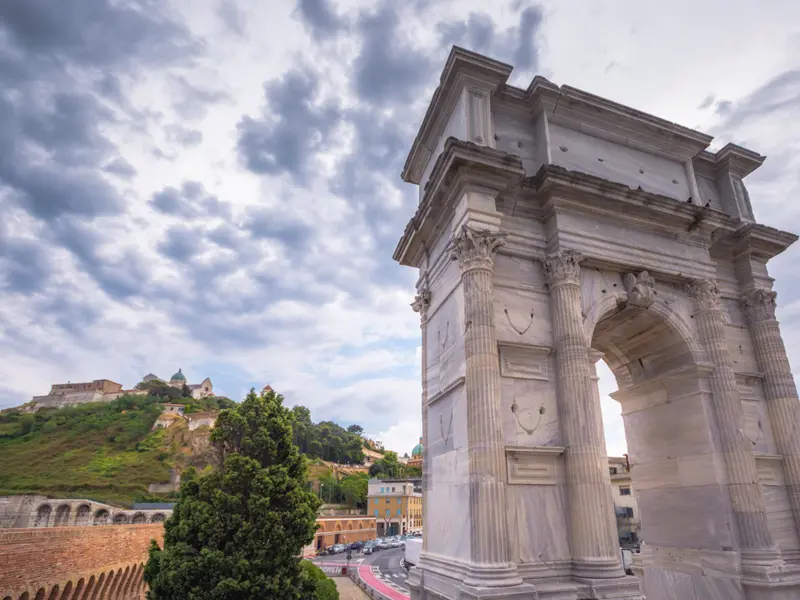
Photo: Copyright© Sisterscom.com, Shutterstock
ARCH OF TRAJAN AND THE ROMAN AMPHITHEATRE
Via Pio II
Another symbol of the city of Ancona, the Arch of Trajan was erected in honour of Emperor Trajan between 115 and 116 AD. The Roman Amphitheatre was built between the end of the 1st century BC and the beginning of the 1st century AD. The amphitheatre has more than 20 steps and was able to hold between 7,000 and 10,000 spectators. When no longer used for shows, it became a fortalice, until it was abandoned definitively and used as a quarry for construction materials.
Another symbol of the city of Ancona, the Arch of Trajan was erected in honour of Emperor Trajan between 115 and 116 AD. The Roman Amphitheatre was built between the end of the 1st century BC and the beginning of the 1st century AD. The amphitheatre has more than 20 steps and was able to hold between 7,000 and 10,000 spectators. When no longer used for shows, it became a fortalice, until it was abandoned definitively and used as a quarry for construction materials.
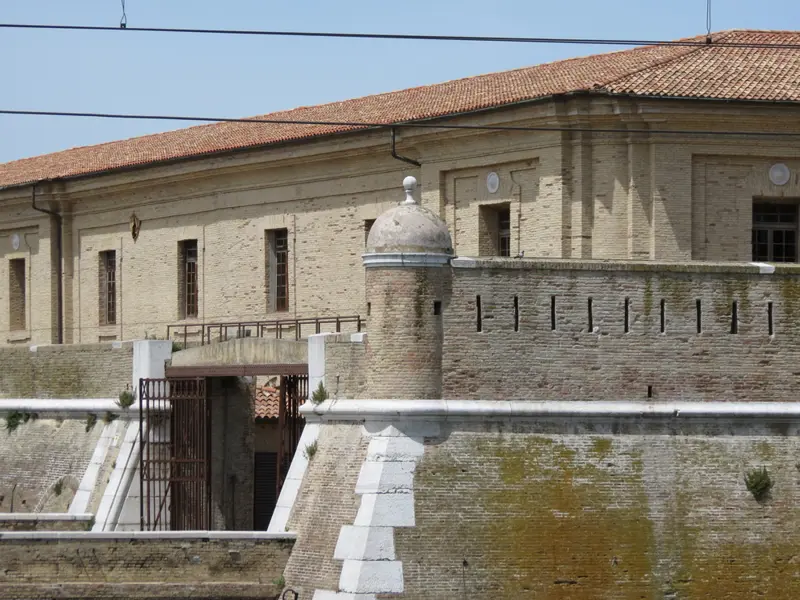
Photo: Copyright© Sisterscom.com, Shutterstock
MOLE VANVITELLIANA
Banchina Giovanni Da Chio, 28
The Mole Vanvitelliana, in a classic pentagonal shape, is an extremely solid architectural structure. Luigi Vanvitelli began work on its design in 1732. Its military function is still seen today by the presence of a bastion, the height of the surrounding walls and the embrasures. Today it is an important cultural centre that holds large exhibitions and events.
The Mole Vanvitelliana, in a classic pentagonal shape, is an extremely solid architectural structure. Luigi Vanvitelli began work on its design in 1732. Its military function is still seen today by the presence of a bastion, the height of the surrounding walls and the embrasures. Today it is an important cultural centre that holds large exhibitions and events.
Museums
MARCHE NATIONAL ARCHAEOLOGICAL MUSEUM
Via G. Ferretti, 6
The MANM exhibits a summary, from Prehistory to the Roman period, of the history and archaeology of the Marche area. The museum preserves the richest and most important collection regarding the Piceni civilisation in existence. The Palazzo Ferretti is the prestigious sixteenth-century seat of the museum.
The MANM exhibits a summary, from Prehistory to the Roman period, of the history and archaeology of the Marche area. The museum preserves the richest and most important collection regarding the Piceni civilisation in existence. The Palazzo Ferretti is the prestigious sixteenth-century seat of the museum.
PINACOTECA FRANCESCO PODESTI
Via Ciriaco Pizzecolli, 17
The Art Gallery preserves paintings of extraordinary importance for understanding painting of the Marche region from the fourteenth to the nineteenth century. It is housed in the Palazzo Bosdari and is dedicated to the painter from Ancona, Francesco Podesti, who donated numerous works, including cartoons and sketches. Other works from churches, stores and private donors were then added.
The Art Gallery preserves paintings of extraordinary importance for understanding painting of the Marche region from the fourteenth to the nineteenth century. It is housed in the Palazzo Bosdari and is dedicated to the painter from Ancona, Francesco Podesti, who donated numerous works, including cartoons and sketches. Other works from churches, stores and private donors were then added.
CITY MUSEUM
Piazza del Pebliscito
The museum is situated in the middle of the historic centre of Ancona and houses archaeological finds, graphic reproductions and photographs of buildings, places and people, original prints, paintings, models and much more besides. The items refer to the history of Ancona and its most important events, from the second millennium BC to the present day, comparing the different historical eras.
The museum is situated in the middle of the historic centre of Ancona and houses archaeological finds, graphic reproductions and photographs of buildings, places and people, original prints, paintings, models and much more besides. The items refer to the history of Ancona and its most important events, from the second millennium BC to the present day, comparing the different historical eras.
Excursions in Ancona
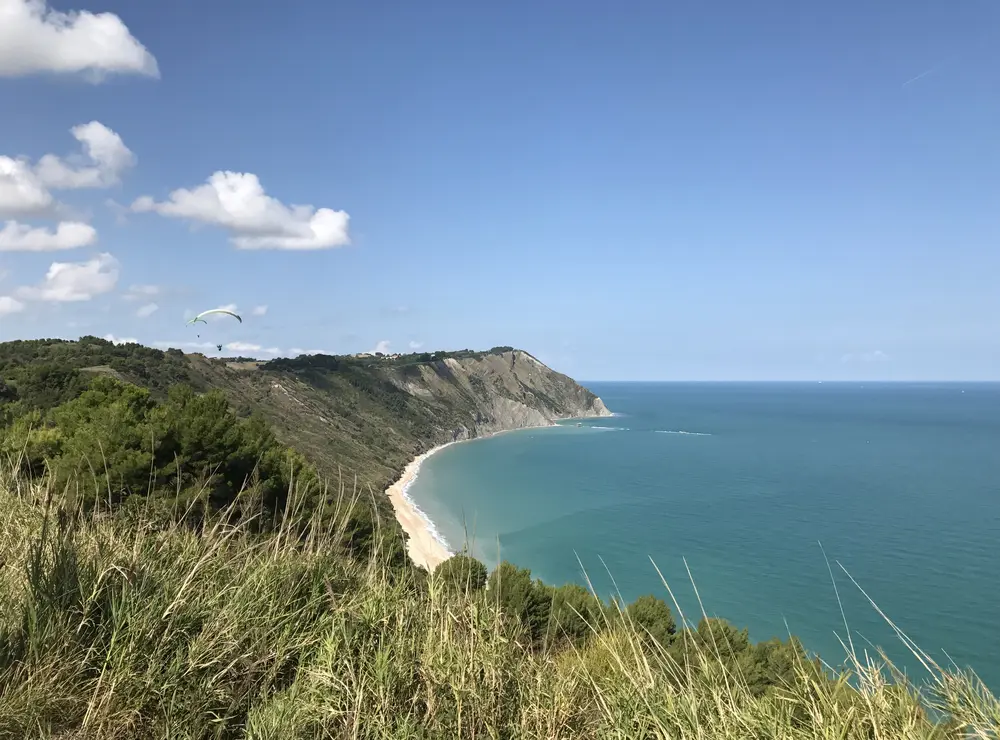
Photo: Copyright© Sisterscom.com, Shutterstock
CONERO REGIONAL PARK
Via Peschiera, 30/a Sirolo
The Conero Regional Park is a nature reserve which, since 1987, protects a rich variety of flora and fauna as well as cultural treasures that are testament to the recorded history of Protected Art. Mount Conero is 572 metres high and features imposing cliffs facing the Adriatic Sea to the east, which give rise to striking beaches and bays, set between the sea and the mountains. There are also routes that can be covered by mountain bike or on horseback. Don’t miss the “Strada del Rosso Conero” (Conero Red Road), with a visit to thewineries where local, excellent quality products, such as oil, honey and wine, can be purchased.
The Conero Regional Park is a nature reserve which, since 1987, protects a rich variety of flora and fauna as well as cultural treasures that are testament to the recorded history of Protected Art. Mount Conero is 572 metres high and features imposing cliffs facing the Adriatic Sea to the east, which give rise to striking beaches and bays, set between the sea and the mountains. There are also routes that can be covered by mountain bike or on horseback. Don’t miss the “Strada del Rosso Conero” (Conero Red Road), with a visit to thewineries where local, excellent quality products, such as oil, honey and wine, can be purchased.
Partnership with GetYourGuide
Tours and excursions
News & Useful info
Shopping
You might be interested in
Destinations found in the vicinity
Other destinations
Airports nearby Ancona

